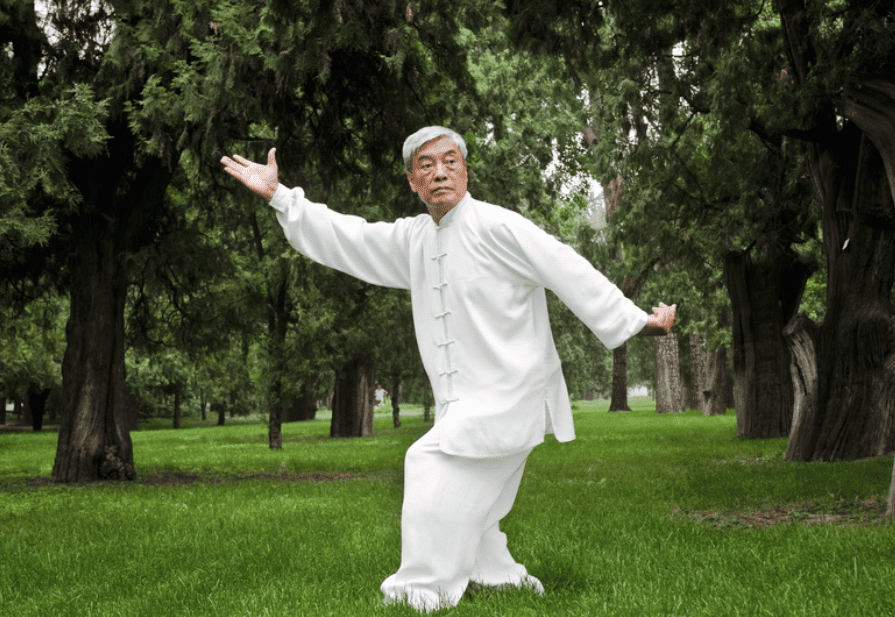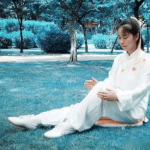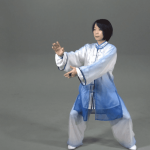What is Wu Style Tai Chi?
- Wu style Tai Chi Chuan is one of the traditional martial arts of China, characterized by its emphasis on softness overcoming hardness and a relaxed, natural state.
- It is often referred to as the “Longevity Fist,” “Gentleman’s Fist,” and “Medicinal Fist.” In November 2014, “Wu-style Tai Chi Chuan” was included in the national-level list of representative projects for intangible cultural heritage.
- The essence of Wu-style Tai Chi Chuan lies in “cultivating softness and prioritizing health,” with a special emphasis on relaxation. Learning it requires long-term practice and contemplation.
Historical Origins
- Wu Quanyou, from Daxing, Hebei, developed the “Zhong Jia Style” of Tai Chi Chuan.
- He absorbed the essence of the Yang family Tai Chi Chuan, founded by Yang Luchan and Yang Banhou.
- Wu Quanyou’s creation can be seen as the embryonic form of Wu-style Tai Chi Chuan.
- His son, Wu Jianquan, refined and expanded the style over decades.
- Wu-style Tai Chi Chuan emphasizes softness as the primary principle, with a compact frame, delicate techniques, and agile movements.
Two Branches of Wu Tai Chi
- Wu-style Tai Chi Chuan is divided into two branches, the Northern and Southern schools.
- The Southern school, passed down by Grandmaster Wu Jianquan, has notable disciples such as Wu Gongzao, Wu Gongyi, Wu Yinghua, Ma Yueliang, and Xu Zhiyi.
- The Northern school, founded by Grandmaster Wang Maozhai, counts among its disciples Wang Jie (Ziying), Wang Ti (Zichao), Zhao Tiean, Xiu Pixun, Peng Guangyi (Renxuan), and Yang Yuting. Later generations include Zhao Anxiang, Li Jingwu, Wang Peisheng, Xiu Liang, Xiu Zhan, and Zhan Bo.
- Further, Xiu Liang and Xiu Zhan passed on their teachings to Xiu Shuyu, Cui Yuchen, Zhou Xulin, and others.
- The Wu style from the Northern school was also disseminated to the South by Wu Tunan’s disciple Mo Yunlong (son of Mo Fei) in the 1930s. Mo Yunlong primarily propagated the Wu-style Southern Charm of Tai Chi.

Features of Wu Tai Chi
- Emphasis on Mindfulness:
- Wu-style Tai Chi Chuan emphasizes the role of mindfulness.
- Practitioners are required to move with the mind, guide the qi with intention, and coordinate movements according to acupoints.
- Mindfulness ensures harmony of mind, qi, and body, enhancing body coordination and stability.
- Smooth Movement:
- Movements in Wu-style Tai Chi Chuan require continuous flow.
- Each movement seamlessly connects with the next.
- Transitions are smooth and natural, maximizing flexibility, agility, coordination, and balance.
- Softness Overcomes Hardness:
- Advocates using softness to overcome hardness.
- Emphasizes the use of intention over force, softening hardness, and using defense as offense.
- Focuses on utilizing the body’s flexibility and agility to neutralize opponents’ force.
- Attention to Posture:
- Requires correct posture aligned with the body’s physiological structure.
- Aims to avoid muscle strains or joint injuries.
- Emphasizes maintaining consistent coordination, center of gravity, and balance.
- Rich Cultural Connotations:
- Wu-style Tai Chi Chuan is an integral part of Chinese traditional culture.
- Represents martial skills and cultural cultivation.
- Emphasizes learning and understanding traditional culture to cultivate both body and mind.
Application of Wu-Style Tai Chi in Actual Combat
1. Striking High against Low, Preferably with Chopping and Hooking Techniques:
- When the opponent is slightly shorter than me or when they are closing in with an equal stature, employing chopping or hooking punches can often result in a decisive blow, becoming one of the keys to subduing the enemy.
- Techniques like “Overturning and Twisting Punch” deliver a downward chopping blow, demonstrating a distinct use of force compared to larger techniques.
- The “Twin Peaks Penetrating the Ears” involves coordinated hooking punches, targeting the ears, with the waist rotation and hip movement facilitating the inward hooking motion.
2. Countering Opponent’s Change of Techniques with Hip Strikes:
- If the opponent transitions into techniques like whip punches or rear leg sweeps, striking the opponent’s buttocks with a heel kick or adding a kick after a push can disrupt their attack.
- The key is to relax the waist and collapse the hips, generating force to strike with the heel or toe, causing the opponent to lose balance and stumble forward.
3. Neutralizing Opponent’s Unorthodox Attacks with Abdominal Strikes:
- When the opponent deviates from conventional punches and kicks, it can be challenging for less experienced practitioners to defend, often leading to vulnerabilities.
- The technique “Grasping Knee and Planting Punch” effectively neutralizes erratic attacks.
- By swiftly transitioning from left-hand maneuvers to a right-handed spiral punch directed at the opponent’s navel, the opponent can be incapacitated, collapsing from the impact.
4. Resolving Strikes to the Abdomen with Rolling Arms and Elbows:
- Practitioners with extensive combat experience often encounter strikes targeting the chest and above, which are easier to discern and counter.
- However, unexpected strikes to the lower abdomen, particularly from the right side, pose greater challenges.
- Employing rolling arms and elbows can effectively neutralize such attacks, allowing practitioners to maintain control and counter effectively.

Tips for Beginners
Harmony of Mind and Qi
- The mind and qi should be in harmony, with a clear spirit and stable breath, and the stance should be firmly grounded.
- The center of gravity should be close to the waist and back, with the spirit inwardly collected, enabling a state of calmness and stability.
Correct Posture
- Every posture must be correct, avoiding any slanting. Regardless of whether it’s bending, stretching, or twisting, with a variety of postures, the center of gravity must remain stable.
- A stable center of gravity allows for agile and coordinated movements, with orderly advances and retreats; an unstable center of gravity leads to loss of control, and unclear distinctions between substantial and insubstantial.
Natural Comfort
- Strive for a sense of natural ease, avoiding forced movements. Attain a uniform motion, steady breathing, and tranquil spirit, thus avoiding stagnation of energy.
Body Expansion
- Embrace the concept of expansiveness. Movements and postures should aim for expansion, allowing every joint in the body to stretch gradually and naturally, without forcing, resulting in a relaxed and composed state.
Lightness and Agility
- Pursue lightness and agility while avoiding floating movements. Movements should be light and gentle, allowing for free and easy transitions. With prolonged practice, one can develop a sense of lightness and heaviness, and subsequently, a sense of sticking and adhering.
Sensitivity and Adaptability
- Require sensitivity and adaptability, transitioning from lightness and agility to relaxation, and then to sticking and adhering. Mastery of sticking allows for continuous following, leading to sensitivity, and an understanding of maintaining connection without losing one’s position.
Completeness and Continuity
- Aim for completeness in every movement, without flaws. This ensures a seamless flow of energy, avoiding interruptions or inconsistencies. In pushing hands, power must be applied fully; where everything is complete, agility follows.
Flexibility and Freedom
- Strive for flexibility without clumsiness or stiffness. Once all the above principles are integrated, the body can flexibly extend, contract, open, and close, moving forward and backward freely.
The Three Key Principles for Beginners Learning Wu-style Tai Chi Chuan:
Lightness:
- When practicing Wu-style Tai Chi Chuan, all movements must be done lightly.
- The principles state: “Every movement should be light and agile throughout the body.”
- Although it may be difficult for beginners to achieve agility, they must start with lightness.
- With persistent practice, one naturally achieves the level of sensitivity where “not a feather can be added, nor a fly alight.”
- Lightness is the first step towards agility. Mastering lightness lays a solid foundation for future practice.
Slowness:
- For many beginners of Wu-style Tai Chi Chuan, movements must be slow.
- Slow practice is suitable for those with weak bodies.
- It allows you to understand and adjust the strength in various parts of the posture accurately. With continued practice, you become more agile while maintaining uniformity in movement speed.
Uniformity:
- When practicing Wu-style Tai Chi Chuan, whether fast or slow, one should maintain a relatively constant speed throughout the entire movement process, which is referred to as “uniformity.”
- The method to achieve “uniformity” is to view each movement as a connection of numerous points rather than just two points of starting and ending. This mindset helps develop the awareness of flowing energy throughout the movements.
- Through regular practice of Wu-style Tai Chi Chuan, you will naturally gain insights into the speed and other aspects of your movements.
How to Learn Wu Style Tai Chi Fast for Beginners?
Unity of Knowledge and Action:
- Tai Chi Chuan should be highly valued as a genuine path into traditional Chinese culture.
- Many people’s understanding of traditional Chinese culture only stays at the level of vocabulary and reasoning.
- The creation of Tai Chi Chuan by ancient Chinese people is not only in line with the concepts of traditional culture such as the Book of Changes (Yijing) but also matches their life realm and martial arts cultivation. This is the unity of knowledge and action.
Natural Comfort:
- Many people advocate for the diligent practice of Tai Chi Chuan, citing historical figures who practiced diligently.
- True Tai Chi Chuan practitioners, originating from traditional culture, do not advocate for hard practice.
- Forcing oneself to practice hard against nature is not in line with the characteristic of Tai Chi Chuan being in harmony with the universe.
Theory and Practice as One:
- When visiting the homes of Tai Chi Chuan elders, they often inspire us with theories.
- If we want to practice Tai Chi Chuan, we must understand the profound meanings behind Tai Chi Chuan terms.
- Theory is practice, and practice is theory. Theory and practice are inseparable, and they are one. Therefore, Tai Chi Chuan learners must repeatedly contemplate classic Tai Chi Chuan theories to establish corresponding Tai Chi Chuan thinking.
Videos that good for beginners
More about Tai Chi
What Is Tai Chi Ball | What Are The Benefits | How To Practice


